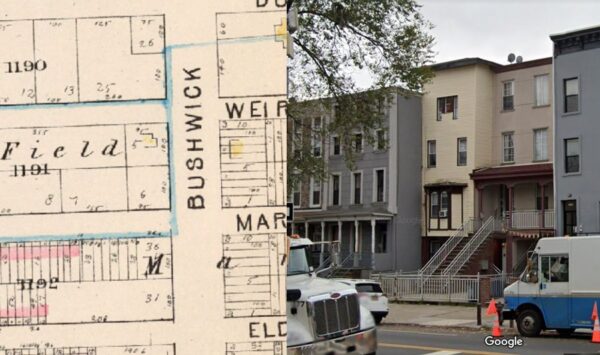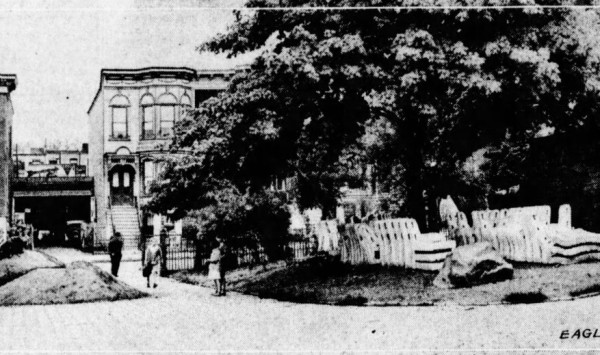THE “WEIRFIELD” HOUSE ON THE HILL (1850)

******************************************************************************************************************************** Brownstone Detectives investigates the history of our clients’ homes. The story you are about to read was composed from research conducted in the course of one of those investigations. Do you know the history of YOUR house? ******************************************************************************************************************************** If Bushwick Avenue were a family, it would likely be an entertainingly and curiously dysfunctional clan. It would maybe be something akin to that harmless uncle who comes to Thanksgiving dinner, doesn’t talk about politics, but engages in witty banter and sips a few too many vermouths. Some houses on the avenue present as mindlessly conforming rowhouses — lined up at attention like toy soldiers. Squeezed within some of those rows, however, we sometimes find structures that seem oh-so-slightly out-of-place – as though they were built in – and transported from – another time and galaxy. One such structure is a 172-year-old house that appears as though it should be sitting alone upon a hill with a view to unfolding valleys of pastureland. THE HOUSE ON THE HILL In the mid-1800s, No. 1250 Bushwick Avenue was the only house on the south side of Bushwick Avenue between Weirfield and Margaretta (Halsey) Streets. The house was erected in approximately 1850 and, in its day of glory, stood on a knoll about six feet above street level, flanked on either side by immense maple trees. The grounds sloped gently down to a stone wall, five feet above the grade of the street, which extended along the street frontage from Weirfield street to Margaretta […]
MISCHIEVOUS BOYS, IRVING SQUARE (1931)

******************************************************************************************************************************** Brownstone Detectives investigates the history of our clients’ homes. The story you are about to read was composed from research conducted in the course of one of those investigations. Do you know the history of YOUR house? ******************************************************************************************************************************** There isn’t much little boy mischief that a Bushwick alderman, a beat cop, and a parks department official can’t handle. And all three were necessary to combat the troublesome striplings that were desecrating Irving Square Park during a renovation in 1931. “There’s not a shrub or a plant missing.” So explained Thomas J. Larney, park keeper for Irving Square Park in Bushwick, in his lilted Irish brogue. “The gardener counts up every week and there’s nothing missing. And there are plenty of seats for people to sit down on.” Larney was responding to public criticisms of a project in the park that was supposed to have ended long ago. Construction equipment, concrete park bench forms, bunches of plants and shrubbery, and piles of dirt, though, still obstructed residents’ enjoyment of the public space. He apparently saw the little mischief-makers, though, as no concern to the project, not even mentioning their after-dark activities. The bigger picture, of course, was just a bit more complicated. A series of unavoidable delays was keeping the contractor from finishing his work. These delays were causing conditions in the park which gave the local residents grief. And the continuation of these conditions presented targets of opportunity for the local miniature scalawags, who would “knock over some of […]